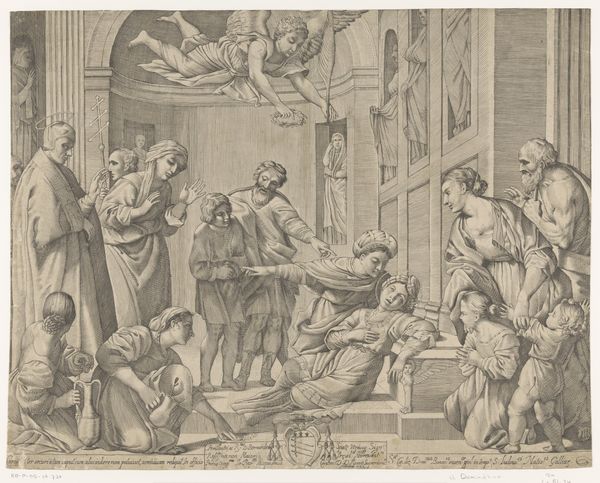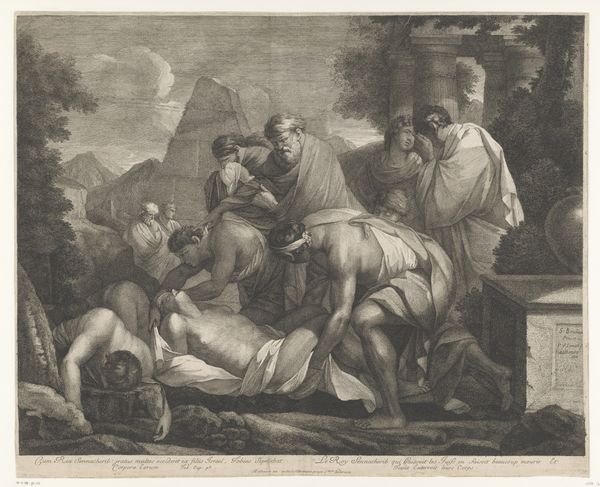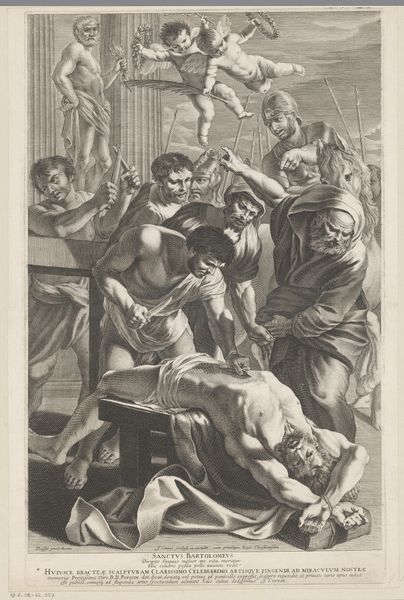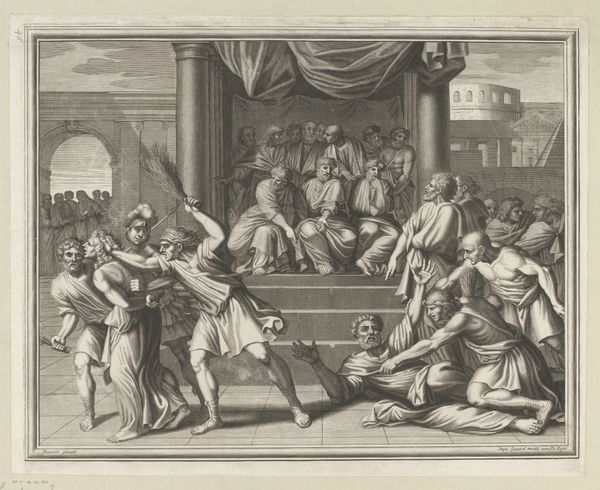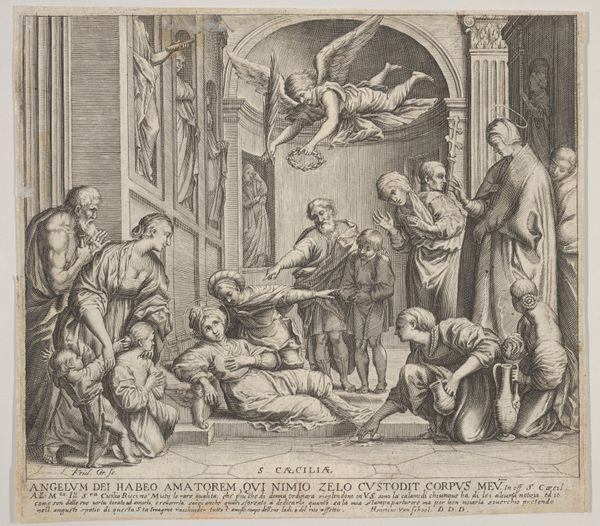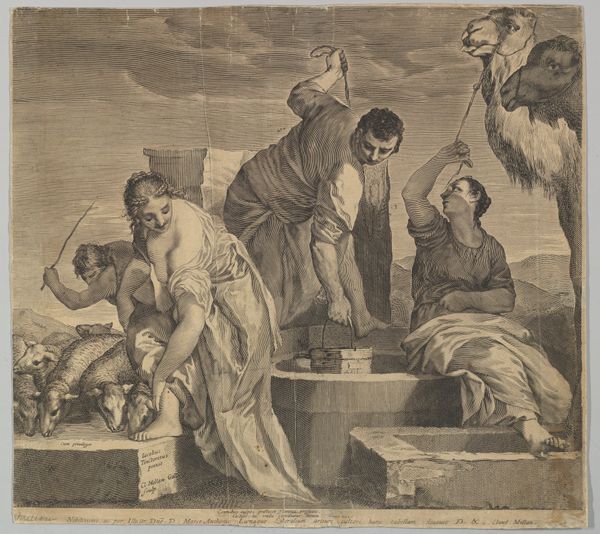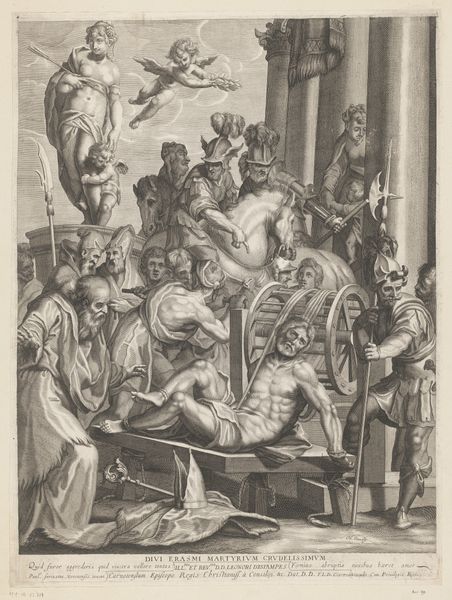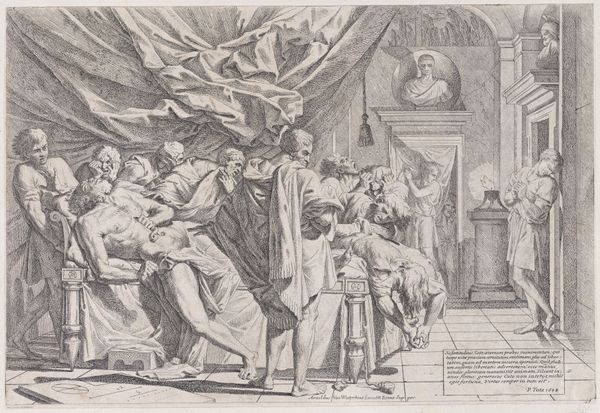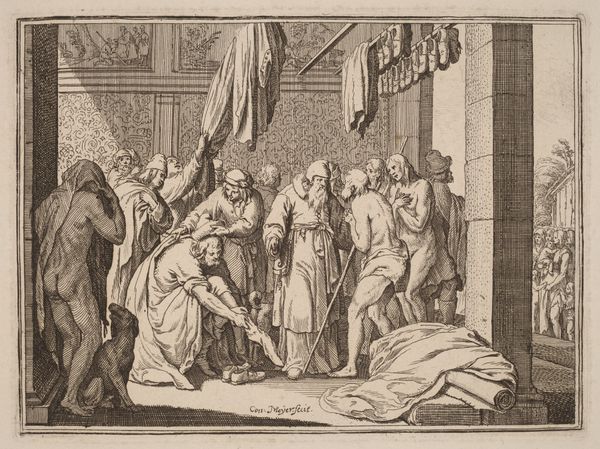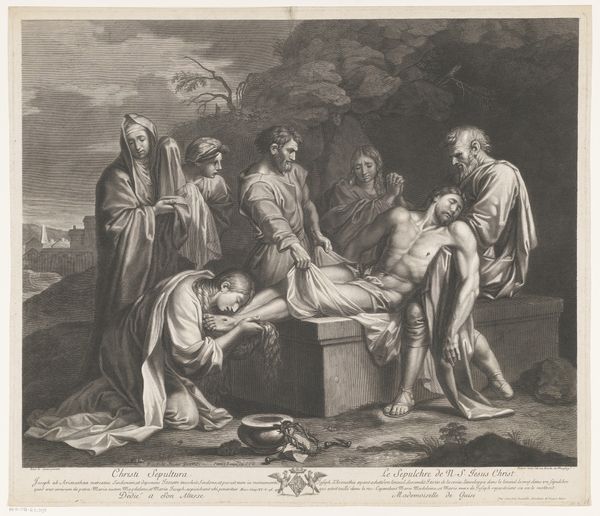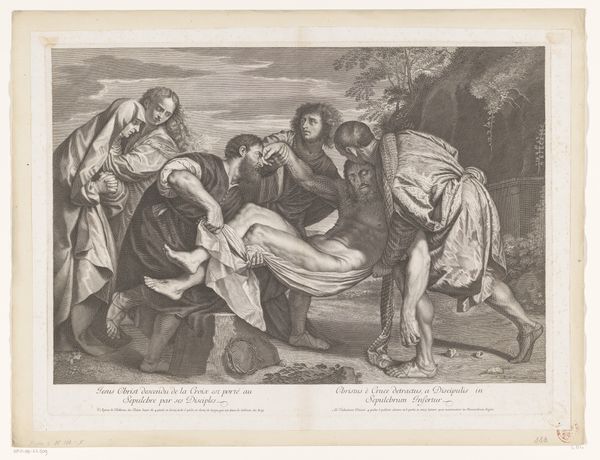
The raising of Lazarus, who is carried by three men at left, while his sister and Christ look on at right; from 'Theatrum Pictorium', after Pordenone 1651 - 1665
0:00
0:00
drawing, print, engraving
#
drawing
#
baroque
# print
#
men
#
history-painting
#
engraving
#
christ
Dimensions: Sheet (Trimmed): 14 1/8 × 19 3/4 in. (35.8 × 50.2 cm)
Copyright: Public Domain
Editor: This is "The Raising of Lazarus," an engraving by Jan van Troyen, made sometime between 1651 and 1665, after a painting by Pordenone. It has such a dramatic, theatrical quality – the way the figures are arranged and their expressive gestures... It's so Baroque! What catches your eye when you look at this print? Curator: Initially, I observe the strategic arrangement of forms. The stark contrast between the shadowed figures carrying Lazarus and the illuminated group surrounding Christ creates a powerful visual polarity. Do you notice how the artist utilizes the architectural setting – those vertical lines – to further emphasize this division? Editor: Yes, it almost feels like a stage. The people on the left are in shadow while Christ stands on a lighted stage with the other figures. But why? Curator: The diagonal line from Lazarus’s outstretched arm to Christ's gaze creates a line of sight for us that suggests resurrection is near, this contrast isn't simply for dramatic effect. Note how Van Troyen uses the engraving technique to create tonal variations that underscore the weight and texture of the bodies. Also, the details—the drapery, the expressions on the faces—these are more than representational elements, are they not? Editor: Absolutely, the expressions feel so genuine, like their emotions were truly captured with the barest of lines. It makes you consider the relationship between composition and content...and how inextricably linked they seem to be here. I noticed this was made “after Pordenone.” Did the artist change anything? Curator: A worthwhile question, one that will involve the study of the two artworks side-by-side. However, by analyzing the work’s formal properties—line, contrast, and composition—we can decode the artistic choices. That knowledge will get us much closer to finding answers than we were before. Editor: That's true. Considering just how the lines create the meaning, you can start to understand what the work as a whole represents without knowing anything about it.
Comments
No comments
Be the first to comment and join the conversation on the ultimate creative platform.
